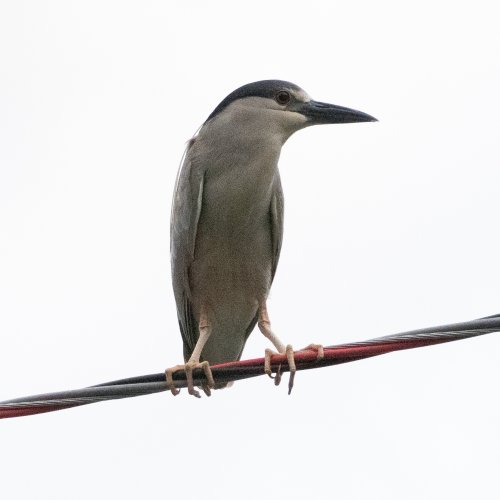StefanSC
Well-known member
Thanks so much. I’ll post a few that were shot in cloudy conditions that are too smoothed out. I used Photoshop AI on the raw files.
The classical shooting up at a bird against a blow-out sky. I'm guessing the heron was under-exposed and you pushed the shadows a bit too?
This is the kind of shot that I usually avoid, no matter the sensor size.
The reason is as follows:
In order to get feather detail, you need to have your light somewhere behind you, falling directly on the feathers and adding contrast to them. In your, the light source is behind the subject (the sky acts like a big soft-box) and most of the light the feathers are getting comes from whatever bounces back from the ground...
So this is the kind of situation where both a bigger sensor or a better lens would be a waste of money. The light is not working with you (or you are working against the light
(Yellow bird is misidentified. It’s a female Orchard Oriole)
I'm not sure what was expected of this shot... The subject is out of focus. And if the OM-1 can't grab it, then you are looking at Nikon Z8, Z9, Sony A1, maybe Canon R5/6.
On my phone, the feathers have no details, the eye is not in focus and the duck is soft overall.
Better phone. That simple.
The shot, at the size it is posted, viewed on a monitor, looks ok. The head seems to be in focus, and I've shot plenty of ducks... you ain't gonna get much in terms of feather detail out of them unless you fill the frame.
I think so.
It's simple only if you have unlimited budget. You get a Z8, a 600mm f6.3 PF (or the 600mm f4 TC) and you're set.
If you have budget constraints, you need to put into balance body capabilities (because short of a Z8, Z9, A1, R5/6, the rest of the FF bodies are worse than the OM-1 for wildlife), lens speed, focal length and so on.
Because you can end up in situations where you'll be paying more than the cost of a 300mm f4 and getting less keepers (e.g: Z6 II and 180-600mm f6.3 is 600$ more expensive than a 300mm f4 for a heavier set-up with a slower lens and worse body... yes, it zooms, but of what I am getting you already are using the 100-400mm at the 400mm focal most of the time


